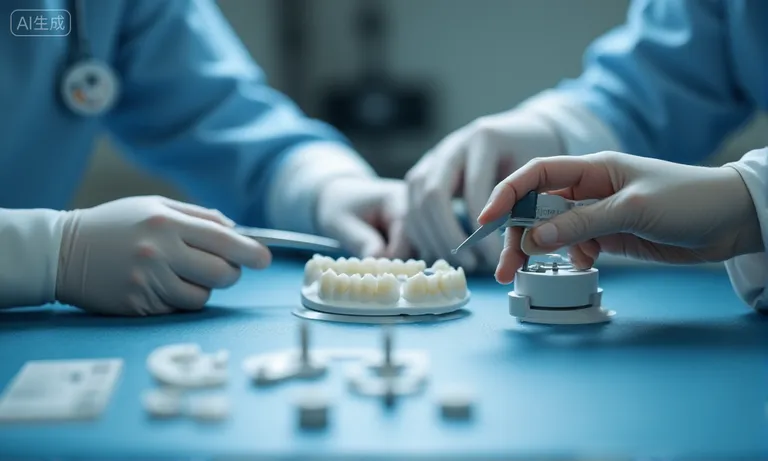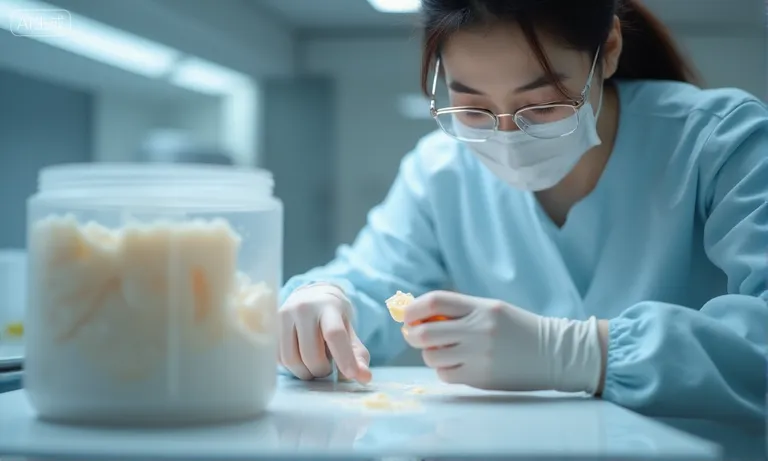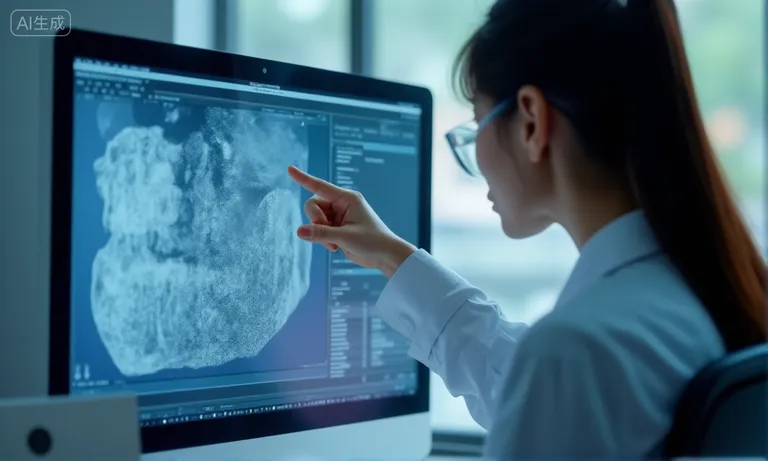3D printing is transforming dental implant restorations by making prosthetics more precise, efficient, and predictable. For clinics and labs, it delivers faster turnaround times, fewer remakes, and smoother workflows, creating a foundation for reliable implant-supported crowns, bridges, and abutments.
Key Considerations for Procurement
- Efficiency Gains: Production cycles for crowns and bridges can be reduced from weeks to hours.
- Precision & Stability: Digital scanning and 3D printing enable accurate abutments, surgical guides, and frameworks with fewer errors.
- Cost Advantages: Reduced material waste, lower labor needs, and minimized remake rates contribute to stronger ROI.
- Collaboration: STL file compatibility and CAD/CAM integration streamline communication between labs and clinics.
- Value Extension: Faster and more predictable outputs improve scheduling efficiency and enhance the patient experience.
Understanding these benefits helps procurement teams and dental labs evaluate the long-term value of adopting or partnering around 3D printing workflows. The combination of speed, accuracy, cost control, and seamless collaboration positions 3D printing as a key enabler of consistent, scalable implant restorations worldwide.
Why Is 3D Printing Becoming Essential in Dental Implant Prosthetics?
3D printing is becoming essential in dental implant prosthetics because it directly addresses the rising demand for accuracy, speed, and scalability that traditional methods cannot meet. Clinics and dental labs face mounting pressure to deliver implant-supported restorations faster and with fewer errors, and additive manufacturing provides the digital backbone to make this shift possible. This change is not just a technological upgrade but a structural evolution in how implant workflows are designed and delivered.
How is the rising demand for implant-supported crowns and bridges driving adoption?
The surge in implant-supported restorations has changed procurement expectations. Ten years ago, implant crowns and bridges were often reserved for complex cases; today, they are standard in general practices worldwide. Dental labs face the challenge of producing consistent results at higher volumes without sacrificing accuracy. 3D printing supports this by enabling batch production, where multiple crowns or frameworks can be fabricated simultaneously with predictable quality. This scalability has become a cornerstone for labs competing in markets where patient demand is outpacing manual capacity.
Why are dental labs shifting from traditional casting to additive manufacturing?
Traditional casting has been reliable but is increasingly seen as inefficient for implant prosthetics. Wax-up, investing, and casting require manual expertise at every step, which introduces variability. With 3D printing, the process begins with a digital design, allowing precise replication across multiple units. This reduces dependency on highly specialized casting technicians and shortens the production cycle. One overseas dental lab we collaborated with noted that by adopting 3D-printed abutments, they reduced remake requests by nearly 20% compared to their casting workflow. Such outcomes demonstrate why labs globally are making the shift toward additive methods.
What role does digital dentistry play in modern implant workflows?
Digital dentistry is the enabler that ties scanning, CAD design, and 3D printing into one seamless workflow. When clinicians send STL files directly from intraoral scans, labs can bypass physical impressions and immediately begin digital design. This eliminates potential distortion from impression materials and shipping delays. The integration with CAD/CAM platforms also supports virtual collaboration: for example, design modifications can be shared in real time between the clinic and the lab. This connectivity is why many consider 3D printing not as a stand-alone tool but as a pillar of digital implant dentistry.
As more clinics expect fast, precise, and collaborative support, 3D printing is becoming indispensable in implant prosthetics. For global dental labs like Raytops Dental Lab, this transformation is not optional—it is the foundation for delivering reliable implant restorations at scale while keeping pace with the industry’s digital shift.
What Efficiency Gains Does 3D Printing Bring to Implant Restorations?
3D printing delivers efficiency gains in implant restorations by compressing production time, streamlining workflows, and enabling scalability that traditional methods cannot match. What used to take weeks can now be completed in days or even hours, reshaping how clinics and labs plan their schedules and manage patient expectations. For labs under pressure to handle growing implant volumes, these efficiency advantages are no longer optional—they define competitive survival.
How does it reduce turnaround time for crowns, bridges, and abutments from weeks to hours?
The most visible gain is the compression of turnaround times.
- Digital files replace physical shipping: Clinics send STL scans instead of impressions, eliminating courier delays.
- Automated build processes: Printers fabricate crowns, bridges, and abutments overnight with minimal supervision.
- Immediate post-processing: After printing, units move straight into sintering or finishing, avoiding multi-day casting and cooling.
As a result, what once required two to three weeks with conventional workflows can now be delivered in under 48 hours for straightforward implant cases. This speed directly impacts patient satisfaction, since fewer appointments are needed to complete restorations.
Why does workflow automation reduce manual adjustments in implant cases?
Implant restorations demand precision, and manual fabrication often leads to inconsistencies. With 3D printing, the workflow is largely automated once the design is finalized in CAD software. By removing multiple manual steps—such as waxing, casting, and fitting—the chances for human error are reduced. Labs report that fitting adjustments chairside are significantly minimized, saving both clinicians and patients valuable time. In one project with a European distributor, batch-printed titanium abutments fit accurately on the first try in over 85% of cases, compared to roughly 65% with cast abutments. This illustrates how automation not only accelerates timelines but also raises reliability.
How can labs scale production for high-volume implant prosthetics?
Scaling implant production is another key benefit.
- Parallel fabrication: Printers can produce dozens of units in a single build cycle, making it possible to serve multiple clinics simultaneously.
- Flexible scheduling: Jobs can be queued and run overnight, allowing continuous production without adding shifts.
- Consistent output: Each build maintains the same tolerances, ensuring predictability even when volumes surge.
For DSOs or networks of clinics, this scalability translates into confidence that their suppliers can handle demand spikes without compromising delivery dates. An overseas dental lab like Raytops Dental Lab has integrated this approach to support partners managing multi-location implant programs, reinforcing that efficiency is about both speed and capacity.
By compressing delivery cycles, reducing manual rework, and enabling true scalability, 3D printing redefines efficiency in implant workflows. For clinics and procurement teams, this means fewer delays, more predictable scheduling, and smoother coordination with their lab partners.
How Does 3D Printing Improve Precision and Stability in Dental Implant Prosthetics?
3D printing improves precision and stability in implant prosthetics by achieving micron-level accuracy, reducing remake risks, and enabling designs that enhance osseointegration. Unlike traditional workflows where variability is introduced at each manual step, additive manufacturing follows a digital blueprint with consistent tolerances. This directly impacts patient outcomes and strengthens the trust between clinics and their lab partners.

Dental-implant-3d-printing-precision
What accuracy levels are achieved in abutments, surgical guides, and full-arch frameworks?
Studies have shown that 3D printing achieves accuracy levels far beyond traditional casting, particularly for implant restorations:
| Prosthetic Component | Traditional Casting Accuracy | 3D Printing Accuracy | Impact on Workflow |
|---|---|---|---|
| Abutments | ~100–150 μm | 20–50 μm | More predictable seating |
| Surgical guides | ~80–120 μm | 20–40 μm | Enhanced surgical precision |
| Full-arch frameworks | ~200 μm+ | 50–70 μm | Reduced misfit risks |
These tolerances translate into fewer chairside adjustments and less risk of implant misalignment during surgery, which is critical in complex multi-unit cases.
How does digital scanning reduce remake rates and misfit risks?
One of the biggest advantages of digital workflows is the ability to bypass distortions common in physical impressions. Intraoral scanners generate high-resolution STL files that feed directly into CAD and 3D printing systems. This continuity reduces the chance of discrepancies between design and final product. For example, a DSO partner in North America reported that by shifting implant cases entirely to digital scan-to-print workflows, their remake rate dropped from 14% to under 5%. For labs, this not only saves material and labor costs but also builds confidence with clinics who measure their satisfaction by how often adjustments are needed.
Why do porous structures enhance osseointegration and long-term implant stability?
3D printing makes it possible to engineer porous or lattice-like structures that traditional milling or casting cannot achieve.
- Bone integration: Porous surfaces allow bone tissue to grow into the implant-supported framework, creating a stronger bond.
- Load distribution: Micro-lattice designs distribute chewing forces more evenly, reducing stress on the implant.
- Biological acceptance: Controlled porosity improves vascularization around the implant site, which supports long-term stability.
These biologically informed designs show why additive manufacturing is not only about speed but also about enabling restorations that align with natural bone healing processes.
For labs such as Raytops Dental Lab, precision and stability are not abstract goals but operational standards. By combining digital scans with additive processes, overseas dental labs can consistently deliver restorations that reduce chairside risks and strengthen long-term implant outcomes.
What Cost and Resource Advantages Come from 3D Printing in Implant Workflows?
3D printing creates cost and resource advantages by minimizing material waste, reducing dependency on manual labor, and lowering remake expenses in implant-supported prosthetics. For procurement teams and clinic groups, these savings translate into more predictable budgets and better long-term ROI when choosing lab partners.

Dental-lab-3d-printing-cost-savings
How does digital production minimize material waste in prosthetic manufacturing?
3D printing uses only the material necessary to create the prosthetic, unlike casting processes that require excess wax, sprues, and investment materials.
- Optimized usage: Resin or metal powders are layered precisely where needed.
- Recyclability: Unused powders can often be reclaimed and reused in subsequent builds.
- Reduced scrap: No large leftover blocks or cut-off excess, common in milling workflows.
This targeted use of resources allows labs to save significantly on expensive metals and biocompatible resins, which directly lowers unit costs. For large-volume implant work, these savings quickly compound into measurable financial advantages.
What impact does reduced manual labor have on cost predictability?
Manual steps such as waxing, casting, and repeated try-ins are not only labor-intensive but also variable in cost depending on technician expertise and time. By replacing these steps with a digital workflow, 3D printing creates a more predictable production model. Once a CAD design is finalized, the print job requires limited supervision and fewer skilled interventions. This consistency enables labs to forecast production expenses with greater accuracy. In practice, one overseas lab found that shifting 40% of implant abutment cases to additive workflows cut technician labor hours by nearly half, freeing skilled staff to focus on complex cases instead of routine tasks. For procurement managers, this means fewer hidden costs creeping into project budgets.
How does improved precision lower remake costs for implant-supported crowns?
Remakes are one of the most underestimated cost drains in implant dentistry.
- Initial misfit leads to refabrication, consuming additional material.
- Extra chairside time requires clinic scheduling adjustments, often at high opportunity cost.
- Repeat shipping across borders further delays delivery and adds expense.
With 3D printing, the accuracy of design-to-production workflows reduces the incidence of remakes. For example, after one DSO trialed 3D-printed implant crowns across its network, remake rates dropped by over 30% compared to cast crowns, saving both lab fees and clinic downtime. When scaled across hundreds of units per month, this reduction created substantial cost efficiency.
For labs like Raytops Dental Lab, controlling waste, labor variability, and remake frequency is part of building sustainable partnerships. As an overseas dental lab, integrating 3D printing into workflows ensures cost transparency and operational stability for clinics and distributors managing implant programs at scale.
How Does 3D Printing Enhance Digital Collaboration Between Labs and Clinics?
3D printing enhances digital collaboration between labs and clinics by standardizing file formats, streamlining design communication, and supporting shared workflows across geographies. This level of digital compatibility ensures that clinicians and lab partners work from the same blueprint, reducing delays and misunderstandings that once complicated implant restorations.

Dental-lab-digital-collaboration-stl
Why is STL and CAD file compatibility critical in implant restorations?
File compatibility is the foundation of digital collaboration.
- Universal language: STL and CAD formats are widely recognized across scanners, software, and printers, ensuring seamless data transfer.
- Error reduction: Compatible files prevent distortion or misalignment during conversion.
- Cross-border collaboration: Clinics can transmit designs globally without worrying about format conflicts.
When a clinician in the U.S. sends an STL file to an overseas dental lab, the lab can immediately begin design and 3D printing, eliminating the lag that used to occur with incompatible software systems.
How does CAD/CAM integration streamline communication for complex cases?
Complex implant restorations often require iterative adjustments. CAD/CAM integration allows these changes to happen in real time. For example, a clinician may request a minor angulation modification on an abutment design; instead of mailing a new impression, the lab can digitally adjust and resend the file within hours. In practice, one DSO partner reported that digital feedback loops cut their back-and-forth case revisions by nearly 40%. This efficiency is especially valuable for full-arch cases where even small misfits can have large downstream effects.
What benefits come from shared digital workflows in implant-supported prosthetics?
Shared digital workflows create structured collaboration benefits:
| Benefit Type | Description | Clinic Impact |
|---|---|---|
| Transparency | Both lab and clinic track progress in the same digital environment | Clearer case updates |
| Predictability | Shared timelines reduce uncertainty in scheduling | More reliable patient bookings |
| Flexibility | Files can be modified at any stage without re-impression | Faster adjustments to treatment plans |
For labs like Raytops Dental Lab, shared workflows are not just a technical feature but a collaboration model. By aligning STL, CAD, and 3D printing into one chain, overseas labs can provide clinics and distributors with real-time visibility and reliability across implant programs.
By building digital bridges instead of shipping molds, 3D printing redefines collaboration—making distance less relevant and accuracy more dependable.
What Indirect Benefits Do Clinics See Through 3D-Printed Implant Prosthetics?
Clinics see indirect benefits from 3D-printed implant prosthetics in reduced patient appointments, smoother scheduling, and minimized risks during implant placement. While the primary efficiency is realized in the lab, these downstream effects significantly improve the daily operations and financial performance of dental practices.

Dental-clinic-patient-efficiency-3d-printing
How does faster lab delivery reduce patient appointments and chair time?
- Shortened case cycles: Crowns and abutments that arrive in days instead of weeks mean fewer interim appointments.
- One-visit delivery: Same-week completion allows clinicians to finalize implant cases in fewer sittings.
- Chairside efficiency: Less waiting for lab adjustments reduces idle chair time.
For clinics managing high patient volumes, this translates directly into more available appointments and increased revenue per chair.
Why does improved fit improve clinic scheduling and efficiency?
Implant prosthetics must fit precisely, or clinicians face extended adjustment sessions. With 3D-printed components designed from digital scans, the initial fit is often far closer to ideal than cast restorations. One clinic partner in Australia noted that chairside adjustment times for full-arch cases dropped by nearly 40 minutes on average after shifting to digitally printed frameworks. This improvement gave them confidence to schedule more tightly, knowing cases would rarely exceed planned time slots. For practices balancing multiple implant surgeries per day, predictable case duration is a significant operational advantage.
How does predictable lab output reduce risks during implant placement?
- Stable timelines: Reliable delivery ensures surgical appointments are not rescheduled at the last minute.
- Prosthetic confidence: Consistency in abutment and guide production minimizes intraoperative surprises.
- Risk reduction: Predictable lab support lowers the likelihood of delays that could compromise healing or patient trust.
This reliability is especially critical for DSOs and group practices managing hundreds of implant cases simultaneously. By partnering with overseas dental labs that embrace digital production, clinics reduce operational risk while improving patient satisfaction.
For Raytops Dental Lab, these indirect benefits highlight the essence of collaboration. By ensuring timely delivery, consistent fit, and predictable output, we act as a dependable extension of the clinic team—helping practices focus on patients rather than production challenges.
Conclusion
3D printing in dental implant restorations is no longer a future option—it is today’s foundation for faster delivery, higher precision, and cost efficiency. For clinics and DSOs, the real value extends beyond technology: it means fewer patient visits, more predictable schedules, and lower risks in daily operations. These outcomes are only possible when labs and clinics collaborate seamlessly through digital workflows. As an overseas dental lab, Raytops Dental Lab integrates 3D printing with global delivery standards, enabling partners to scale confidently while maintaining accuracy and trust in every implant case.


